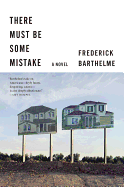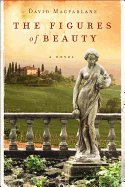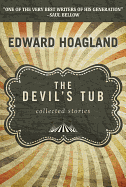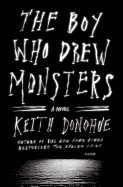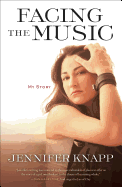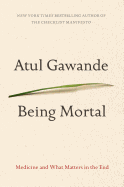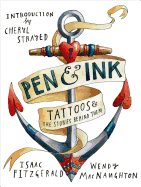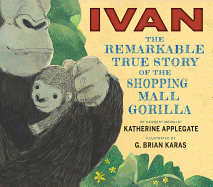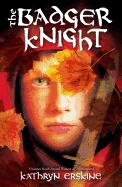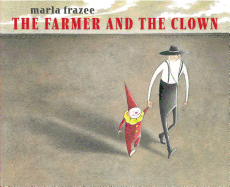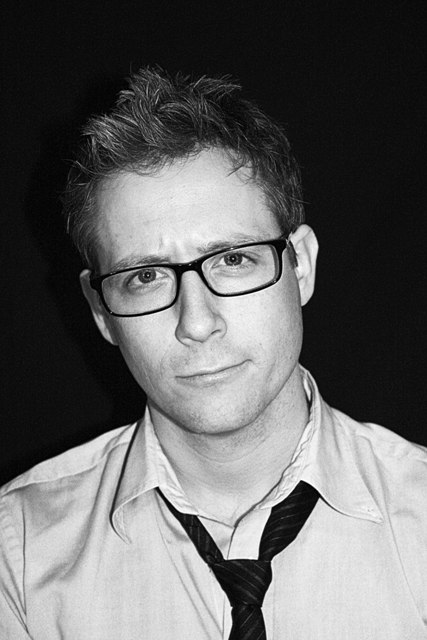 James Ryan Daley was raised Catholic, just like his 14-year-old narrator, Jonathan Stiles. Like Jonathan, Daley began to doubt the teachings of the Catholic church, and he was surprised by how few books for young people dealt with that issue. Jesus Jackson is his debut novel. He and his wife and two daughters live in Newport, R.I.
James Ryan Daley was raised Catholic, just like his 14-year-old narrator, Jonathan Stiles. Like Jonathan, Daley began to doubt the teachings of the Catholic church, and he was surprised by how few books for young people dealt with that issue. Jesus Jackson is his debut novel. He and his wife and two daughters live in Newport, R.I.
What were the seeds of the idea for Jesus Jackson?
It really comes out of my experience with and feelings about doubt and faith and God and death, and all the things I've been thinking about since I was a teenager. Deciding I didn't believe in God was, for me, a quick and easy thing. It sounded like it was just a story. But learning to live with that story, or the absence of that story, has been a lifetime experience.
There's not a lot out there that discusses that. Okay, so you've given up this faith, what do you do now to organize your life, your philosophy? How do you conceive of your future and faith without this ideal to latch onto? I always had an imaginary Jesus friend I would talk to--even after I stopped believing in the actual Jesus. I remember very specifically going to work eight years ago--I was working in Manhattan at the time--I was on the subway, right before my wife and I got engaged, having this imaginary conversation with my imaginary Jesus friend, and I thought, "I should write a story about this, a person who has this imaginary Jesus friend."
The Jesus character is so compelling. He is both archetype and everyman, charismatic and down-to-earth. Was he modeled on a specific person?
It is more of an archetypal spiritual companion. In one sense, he's wise and looking out for Jonathan's best interests, and on the other hand, he's trying to sell him something. A cynical atheist teenager is likely to relate to him. The character himself rose out of that--someone who would fulfill that role of being a spiritual mentor, but for someone who doesn't believe in God or anything spiritual. I didn't want the reader to trust him. Even by the end of the book, it's still in question how trustworthy his intentions were. Part of the experience I'm trying to convey is that searching for some guidance outside yourself is not necessarily helpful.
Jesus Jackson is omnipresent, yet he won't solve Jonathan's problems. Still, he asks the right questions to get Jonathan thinking.
Absolutely. The progression of Jonathan, especially through the back story, is he starts out believing what his parents tell him to believe, and comes to the conclusion that that's not real. He and Ryan look to replace that with something else. In many ways, Ryan himself becomes the replacement for Jonathan's need.
When Ryan dies, Jonathan needs something. What do you do when you have this need for something spiritual, and yet you cannot accept that any of these spiritual ideas that people talk about are true? How do you resolve that? I think Jesus Jackson is a manifestation of a bridge for him, from the loss and desperation to a place where he can come to understand that he can find that for himself.
The priest in whom Ryan confides also serves as a cathartic character. He, too, provides no answers but rather frames the questions for Jonathan. Do you see that as the role of faith? To give seekers a framework in which to search for answers, rather than to provide them?
I wanted the priest to be in many ways a positive character. I didn't want the story to get confused with people getting angry with religious clergy or figures in general. I think there's a lot of that out there, where people direct their feelings of doubt and anger at God at their representatives. I was an altar boy at one time, and everyone was very nice. I wanted to draw that distinction. Jonathan's not a believer, but he doesn't have to be anti-religion.
On a deeper level, I do think that the priest and the police officer, for that matter, do offer truth to Jonathan, even if they're not giving him the whole story. Like the priest, [the police officer] believes things that Jonathan doesn't believe; they both have something to offer. After there's this giving up of the belief, often there's a reaction against those beliefs. Ryan takes up a much stronger viewpoint against religion. I think people can get stuck there. I didn't want Jonathan to wind up there.
I remember my mother telling me at one point, "Rebelling against things is just another way of being controlled by them. If you say black whenever someone says white, you're still being controlled by them." That was a powerful idea to me. I wanted Jonathan to not be in a place of rebellion against religion, or defining himself and his beliefs as the antithesis of these other beliefs.
Questions of faith and doubt are common in adolescence, yet very few people have the courage to write about it--at least for young adults. Did you have any trepidation about tackling this theme?
It didn't cross my mind that I should be concerned, until it came time to publish the book, because these questions of search and introspection completely framed my adolescence, and never really stopped. My bigger concern was, if you're going to write for teenagers you have to be very, very honest. They will not accept platitudes or you trying to feed them your philosophy about how they should be. My only concern was, am I being honest with myself enough to be honest with them. That's why Jesus Jackson helped because I could have all these conversations in my head about what do you really believe. Kids in that place in their lives, you can't gloss over these things, you have to get into the nitty gritty of it.
I rewrote a lot of those conversations between Jesus Jackson and Jonathan, when Jonathan says what he believes and Jesus questions him. That works as a way to conceptualize the idea, but that's not as hard as giving the line about why he's upset, where Jonathan says, "I don't care where he was then, I want to know where he is now." That's the heart of it, that's what we all want to know.
It's painful to observe Jonathan's gradual realization that he wasn't as close to his brother as he had imagined. Readers discover this, along with Jonathan, through his flashbacks to when he was nine, and he joined Ryan on his quest as a seeker. How did you come up with this structure?
That came very early, when I started writing it. I believe one of the reasons I wrote it that way was that I thought it was important that readers get to know Ryan. The other is that the journey, the progression of belief and doubt that Jonathan is on, begins far before the action of the story. If he decides that he doesn't believe in God when Ryan dies, that changes the direction of the story. I think it's a cliché for describing how other people come to a place of believing their religion isn't true--because God let this terrible tragedy happen.
Jonathan had long since given up the idea of God. Now it's time to put that choice and belief system to the test. That's one of the hardest things to live with and think about, when you don't have that belief system. For me, some of the hardest times dealing with belief is when my daughter, who's six, and inquisitive, asks about death. What would happen if her mother died tomorrow? I don't have an answer. I can't say we'd be in heaven looking down on you, because she knows I don't believe that. Does this work as a structure, for the way I look at life and death? I confront that in a more significant way when that belief is already embedded and in place.
The structure takes the form of a two-pronged mystery: 1) how did Ryan die but also 2) how did Jonathan become so distant from Ryan? Did those two strands evolve together? Did one grow out of the other?
I think that Jonathan trying to figure out who his brother is and how he became so distant grew out of his looking for the circumstances of Ryan's death. It's a dual mystery between everything in Jonathan's head mirroring his search for the mysteries of life.
As the book progressed, he looked to Ryan for those answers. Jesus Jackson was the spiritual guide he had after he gave up God. The search for deeper meaning also becomes an analogy for what happened between the two of them--how Jonathan wound up in that place of being without a brother physically and also the comfort and faith that his brother gave him. It tied together so closely with his questioning of faith. That was an important part of the mystery. --Jennifer M. Brown
James Ryan Daley: Exploring Doubt and Faith
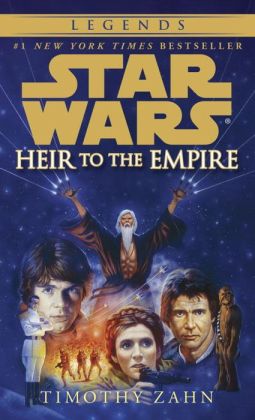



.jpg)
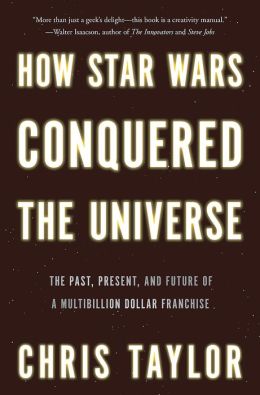 That really didn't destroy your experience of the story, did it?
That really didn't destroy your experience of the story, did it?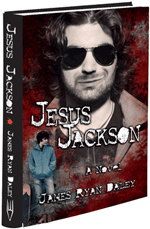

 James Ryan Daley
James Ryan Daley